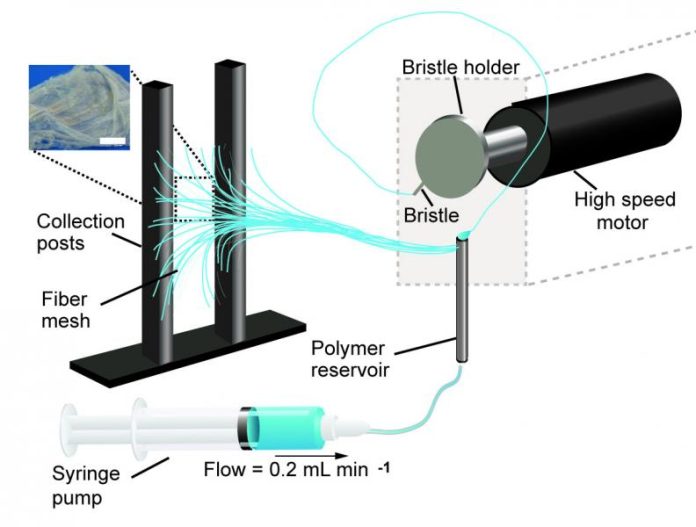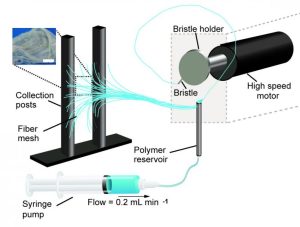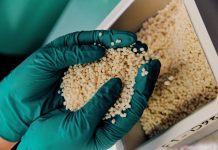
Image credit: Leila Deravi/Harvard University
Harvard researchers have developed a portable nanofibre fabrication device that could potentially be used to dress wounds on a battlefield or dress shoppers in customisable fabrics.

Image credit: Leila Deravi/Harvard University
Existing nanofibre fabrication methods, such as Rotary Jet-Spinning (RJS) and Immersion Rotary Jet-Spinning (iRJS), are great for producing large amounts of a range of materials – including DNA, nylon, and even Kevlar – but until now they haven’t been particularly portable.
However, the Disease Biophysics Group at the Wyss Institute for Biologically Inspired Engineering and the Harvard John A. Paulson School of Engineering and Applied Sciences (SEAS) recently announced the development of a hand-held device that can quickly produce nanofibres with precise control over fibre orientation.
Nina Sinatra, a Graduate Student in the Disease Biophysics Group and co-first author of the paper, said regulating fibre alignment and deposition was crucial when building nanofibre scaffolds that mimic highly aligned tissue in the body or designing point-of-use garments that fit a specific shape.
“Our main goal for this research was to make a portable machine that you could use to achieve controllable deposition of nanofibres,” she said.
“In order to develop this kind of point-and-shoot device, we needed a technique that could produce highly aligned fibres with a reasonably high throughput.”
Dubbed ‘pull spinning’, the new fabrication method uses a high-speed rotating bristle that ‘dips into a polymer or protein reservoir’ and pulls a droplet from solution into a jet. The fibre travels in a spiral trajectory and solidifies before detaching from the bristle and moving toward a collector. Contrary to other processes – which involve multiple manufacturing variables – this novel fabrication requires only one processing parameter, solution viscosity, to regulate nanofibre diameter.
Kit Parker, the director of the Disease Biophysics Group said minimal process parameters translate to ease of use and flexibility at the bench and, one day, in the field.
“This simple, proof-of-concept study demonstrates the utility of this system for point-of-use manufacturing,” Mr Parker remarked.
“Future applications for directed production of customisable nanotextiles could extend to spray-on sportswear that gradually heats or cools an athlete’s body, sterile bandages deposited directly onto a wound, and fabrics with locally varying mechanical properties.”



















